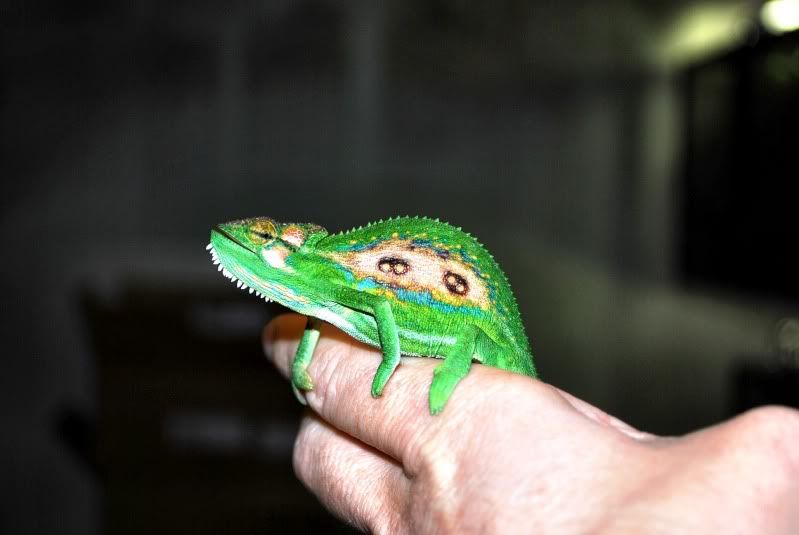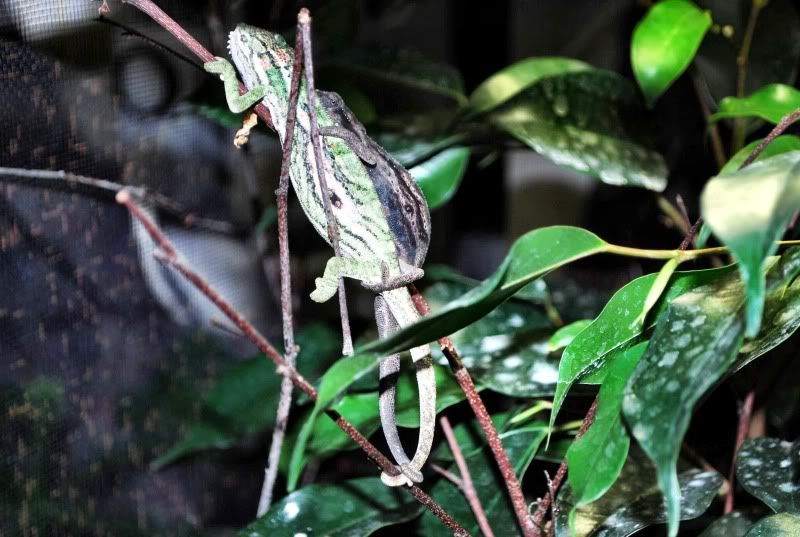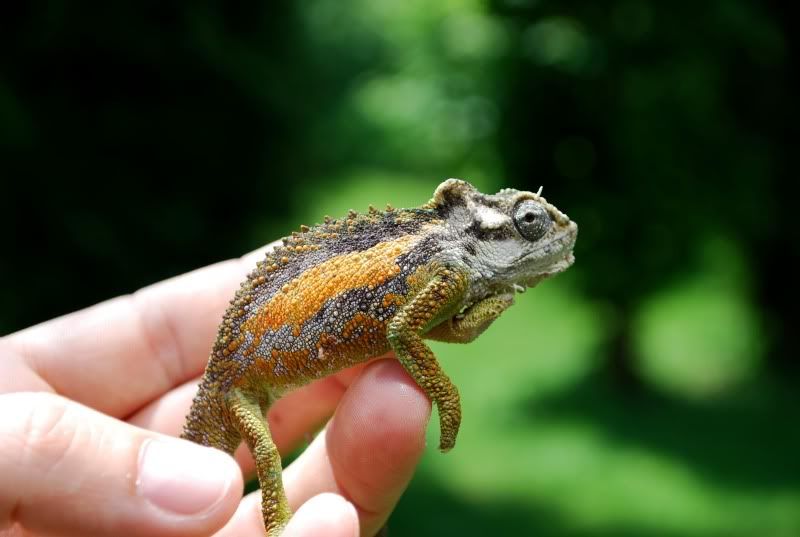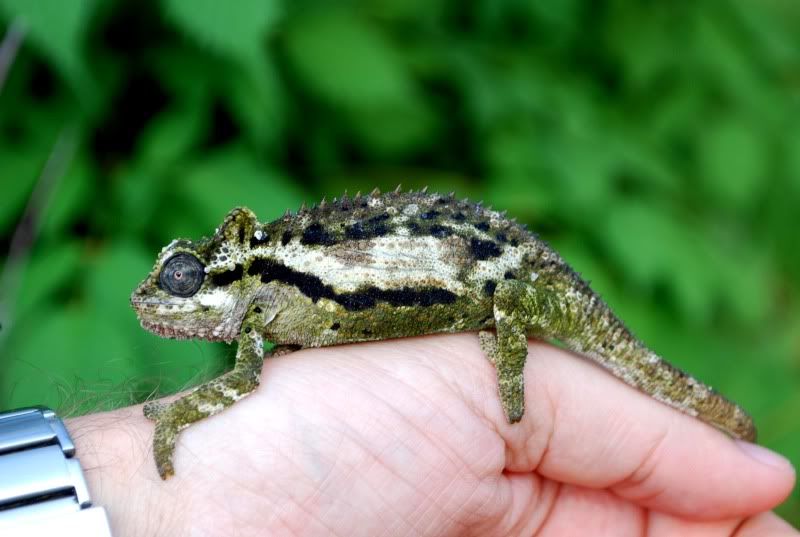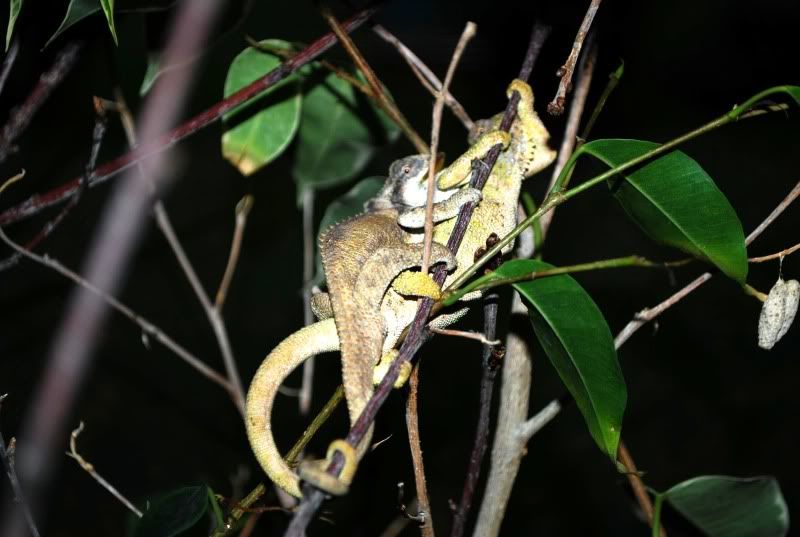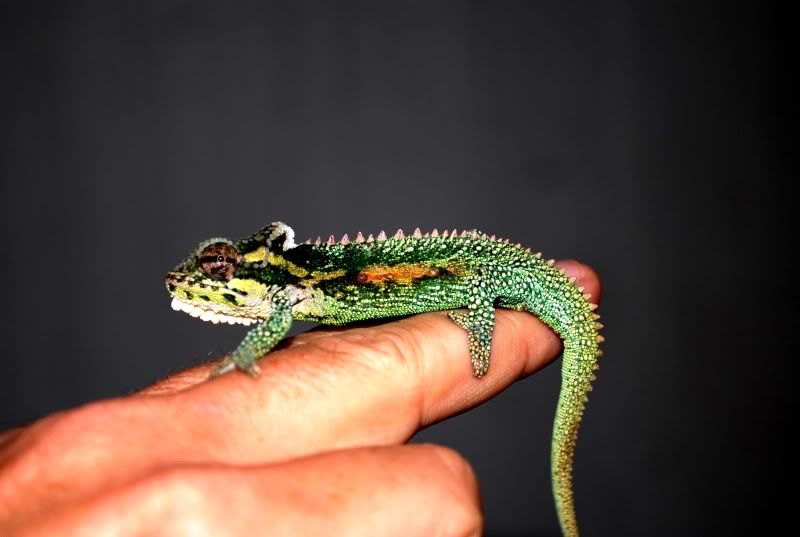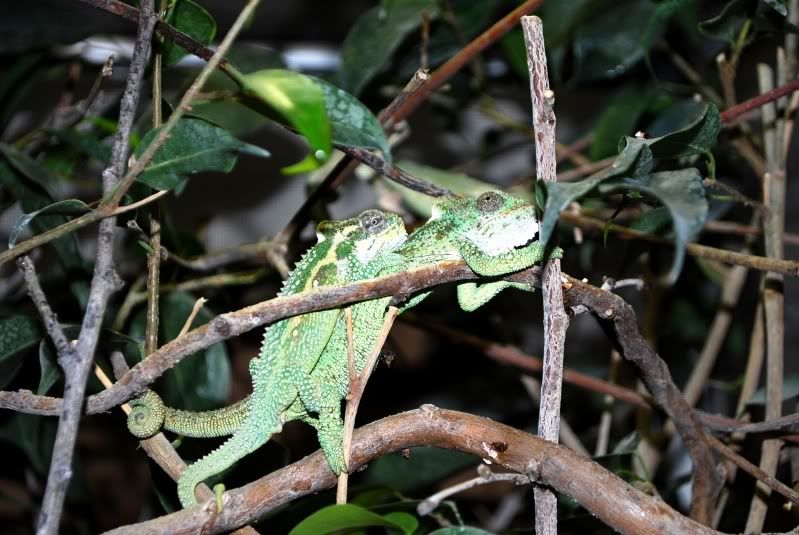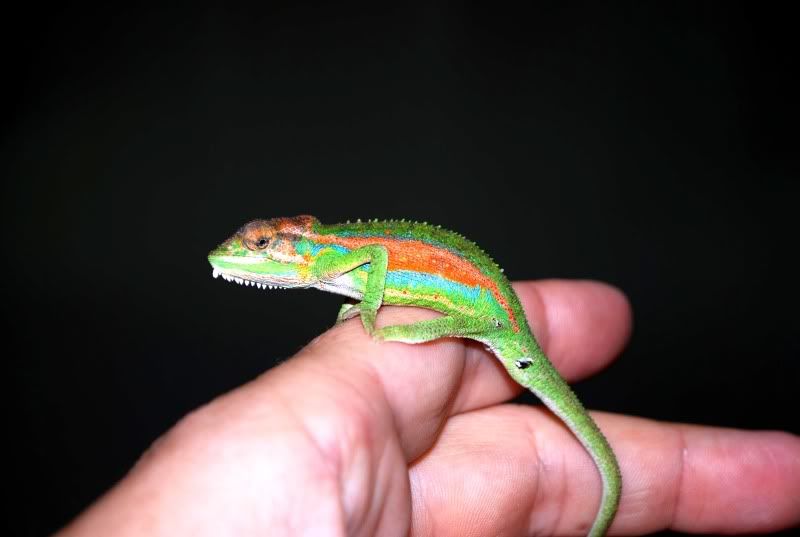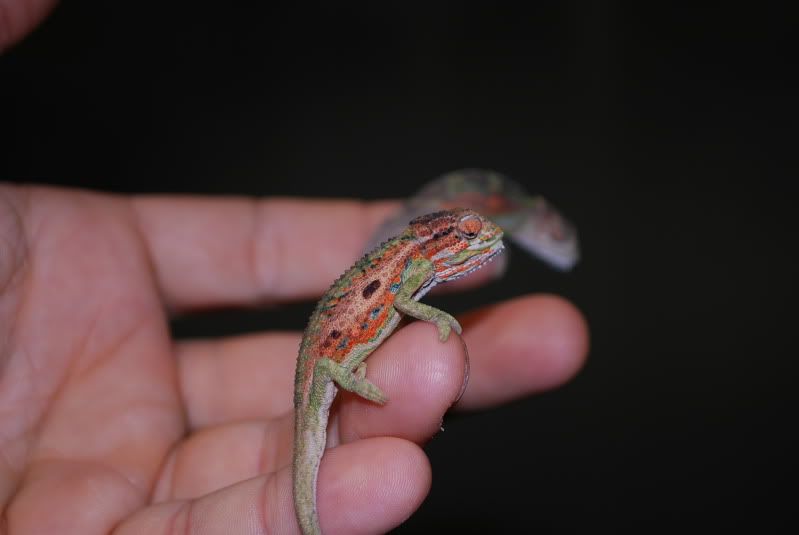showjet95
Avid Member
Deadline for reserving any of these is this Sunday, April 15th. I need to get a few more people on board for thamnobates and pumilum so if you are interested PM me and I will work out a great deal for you. This will be the last opportunity tho. Thanks.
We are trying to get more people interested in importing pairs, trios or groups of these wonderful species to the U.S. early this year. Our hopes are to get captive bred populations going within the states in coming years. I have compiled links to various Bradypodion info, mostly concerning the species available for import. If unable to gain your interest in importing some with us, hopefully you can learn a bit about the South African Dwarf species. They are actually fairly hardy chameleons, dont think that because they are relatively expensive (Not THAT bad, Panthers often go for much, much more) and rare, that only the most experienced keepers can raise them. There are only TWO people breeding ANY species of Bradypodion stateside, that we are aware of. You will not be able to touch a pair for these prices if/when they become available.
Species that will be available
B. Transvaalense 880/pr
B. Thamnobates 800/pr
B. Pumilum 1350/pr
Prices include all fees such as shipping and CITES papers.
I will need a 50% non-refundable deposit to secure the animals in Germany and the other 50% right before they are shipped over.
The breeder keeps them at 68-79F during the day, and 50-60 at night. Basking spot around 85F
Uses a 50w HQL bulb, B. Pumilum are kept slightly warmer.
Misting 2x daily, Morning and afternoon short sessions.
Lights on 12hrs during winter and 14hrs during summer.
Fed on crickets, flies, moths, hoppers, and so on.
He supplements every second feeding with a bird calcium powder. Im sure our calcium supps are just as good or better.
Here is an excellent article written for the Chameleons Online E-zine! (not the greatest pics in it but, some pretty good info)
http://www.chameleonnews.com/10JulDeckersAnderson.html
Everything Brady on the forum!
https://www.chameleonforums.com/bra...adypodion-import-80565/searc...archid=1855460
Little BBC tidbit( Some awesome pics of Transvaalense, Damaranum, Caffrum
http://news.bbc.co.uk/2/hi/in_pictures/7215498.st
Video of showjets B. transvaalense
http://www.youtube.com/watch?v=Q5VRxNmzM7Y
YouTube Bradypodion!
http://www.youtube.com/results?searc...1052l14j1l15l0.
B. thamnobates
http://www.youtube.com/watch?v=tgv3h...feature=relmfu
B. pumilum- BBC "Life in cold blood" segment
http://www.youtube.com/watch?v=-UjuIgUOLRg
Also to anyone interested, I have obtained a copy of a paper in regards to breeding of Bradypodion Thamnobates, excellent information here PM me if interested...
Langerwerf, Bert. "The reproduction in captivity of the Natal Midland Dwarf Chameleon, Bradypodion Thamnobates". British Herpetological Society Bulletin, No. 41,
1992.
Also, there are 2 books which I own and I think have some extremely good info, and go into depth about Bradypodion. The first is called Chameleons of Southern Africa by Krystal Tolley & Marius Burger, and Chameleons of Africa by Colin Tilbury. Both well worth the money.
He tells me that they are easy to keep. He keeps them all in screen cages with a 50 watt HQL bulb and outside the entire summer. He also tells me the pumilum like it a bit warmer, and that they all do better with a good difference in day to night time temps, that may be key. He also keeps them together in pairs or groups of 1.1 or 1.2 year round.
Here is a pic of my male B. transvaalense (like you havent seen him before lol) he is from the same breeder.

Here are some additional pics of his broodstock along with some offspring he has produced. They breed like rabbits when they get to sexual maturity.
male B. transvaalense


juvenile B. transvaalense

female transvaalense (mine)

B. thamnobates
adult males not great pics (for some excellent photos of B. thamnobates please see Chris Andersons thread in the field observations forum on this site!)


sub-adult male

juvenile

B. pumilum (my personal favorite)


female

juveniles


For those concerned about space, they can be housed individually in 18x18x18 cages at the smallest (IMO) I house mine individually in 18x18x24 exo terras and when paired up I house them in 24x18x24 exo terras. Their food requirements are low, as are the costs of keeping them fed. They can also take a very wide temperature range.
Ive also stated a couple times in other threads that when they get to breeding age, size, the males are relentless at attempting to mate with the females, and it is not a gentle affair. The head bobbing is amazing to watch, as they shake their heads extremely fast (more like a twitch) and they basically rape them but that is nature at work .
On a side note, my male has attempted to mate with a female hoehnelli when they were on the same palm lol, and does threat displays to any other cham he sees including my male ambilobe and veiled!
Dont miss out on this extremely rare chance to own and potentially breed these very rare and unique species from South Africa!
We are trying to get more people interested in importing pairs, trios or groups of these wonderful species to the U.S. early this year. Our hopes are to get captive bred populations going within the states in coming years. I have compiled links to various Bradypodion info, mostly concerning the species available for import. If unable to gain your interest in importing some with us, hopefully you can learn a bit about the South African Dwarf species. They are actually fairly hardy chameleons, dont think that because they are relatively expensive (Not THAT bad, Panthers often go for much, much more) and rare, that only the most experienced keepers can raise them. There are only TWO people breeding ANY species of Bradypodion stateside, that we are aware of. You will not be able to touch a pair for these prices if/when they become available.
Species that will be available
B. Transvaalense 880/pr
B. Thamnobates 800/pr
B. Pumilum 1350/pr
Prices include all fees such as shipping and CITES papers.
I will need a 50% non-refundable deposit to secure the animals in Germany and the other 50% right before they are shipped over.
The breeder keeps them at 68-79F during the day, and 50-60 at night. Basking spot around 85F
Uses a 50w HQL bulb, B. Pumilum are kept slightly warmer.
Misting 2x daily, Morning and afternoon short sessions.
Lights on 12hrs during winter and 14hrs during summer.
Fed on crickets, flies, moths, hoppers, and so on.
He supplements every second feeding with a bird calcium powder. Im sure our calcium supps are just as good or better.
Here is an excellent article written for the Chameleons Online E-zine! (not the greatest pics in it but, some pretty good info)
http://www.chameleonnews.com/10JulDeckersAnderson.html
Everything Brady on the forum!
https://www.chameleonforums.com/bra...adypodion-import-80565/searc...archid=1855460
Little BBC tidbit( Some awesome pics of Transvaalense, Damaranum, Caffrum
http://news.bbc.co.uk/2/hi/in_pictures/7215498.st
Video of showjets B. transvaalense
http://www.youtube.com/watch?v=Q5VRxNmzM7Y
YouTube Bradypodion!
http://www.youtube.com/results?searc...1052l14j1l15l0.
B. thamnobates
http://www.youtube.com/watch?v=tgv3h...feature=relmfu
B. pumilum- BBC "Life in cold blood" segment
http://www.youtube.com/watch?v=-UjuIgUOLRg
Also to anyone interested, I have obtained a copy of a paper in regards to breeding of Bradypodion Thamnobates, excellent information here PM me if interested...
Langerwerf, Bert. "The reproduction in captivity of the Natal Midland Dwarf Chameleon, Bradypodion Thamnobates". British Herpetological Society Bulletin, No. 41,
1992.
Also, there are 2 books which I own and I think have some extremely good info, and go into depth about Bradypodion. The first is called Chameleons of Southern Africa by Krystal Tolley & Marius Burger, and Chameleons of Africa by Colin Tilbury. Both well worth the money.
He tells me that they are easy to keep. He keeps them all in screen cages with a 50 watt HQL bulb and outside the entire summer. He also tells me the pumilum like it a bit warmer, and that they all do better with a good difference in day to night time temps, that may be key. He also keeps them together in pairs or groups of 1.1 or 1.2 year round.
Here is a pic of my male B. transvaalense (like you havent seen him before lol) he is from the same breeder.
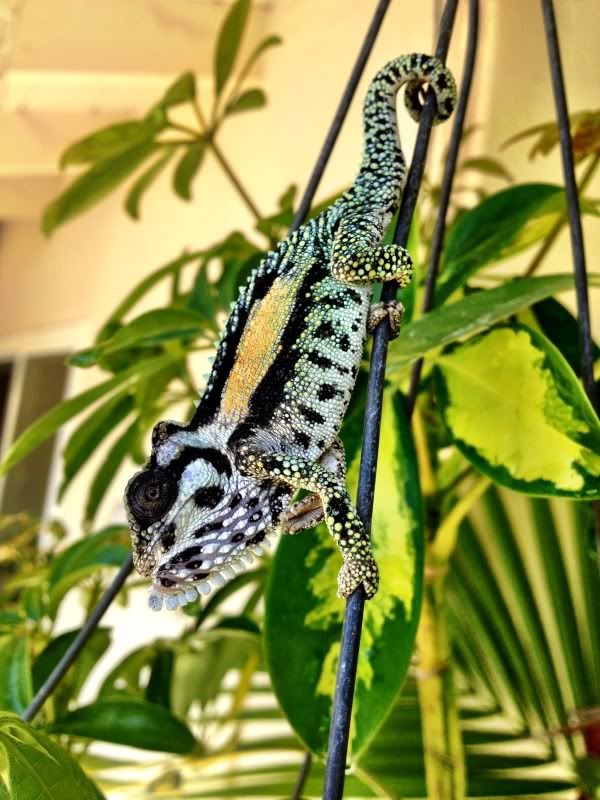
Here are some additional pics of his broodstock along with some offspring he has produced. They breed like rabbits when they get to sexual maturity.
male B. transvaalense
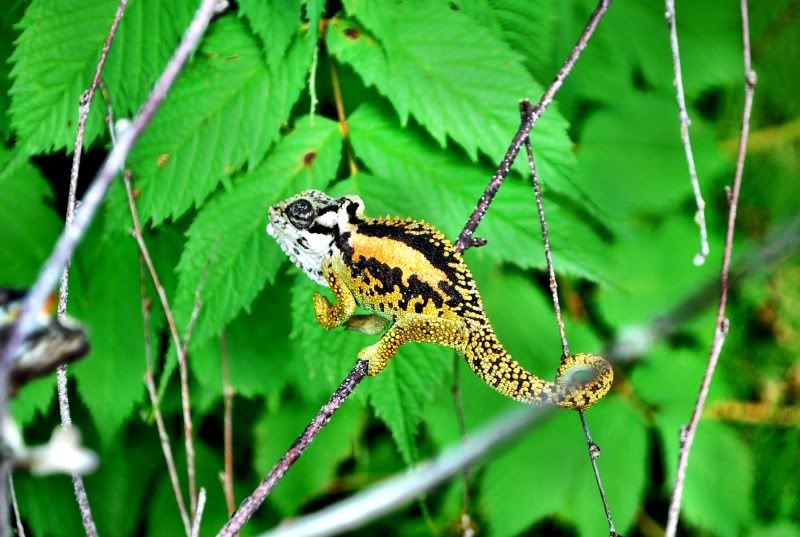
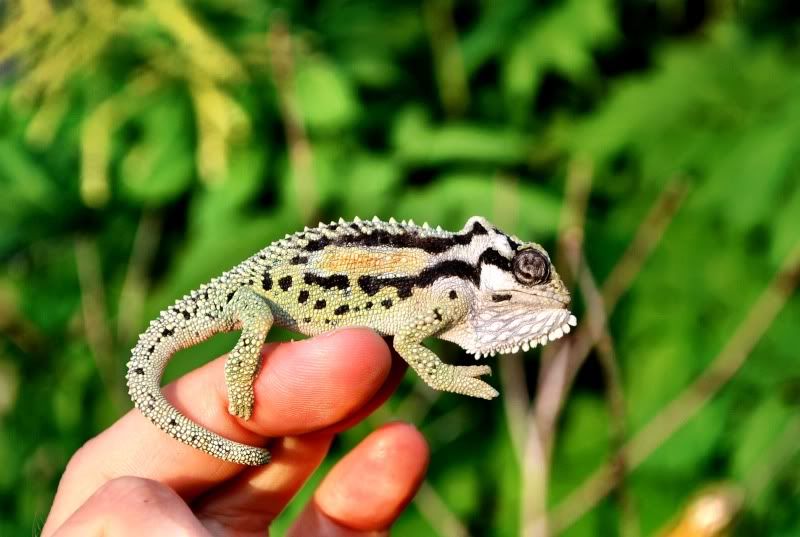
juvenile B. transvaalense
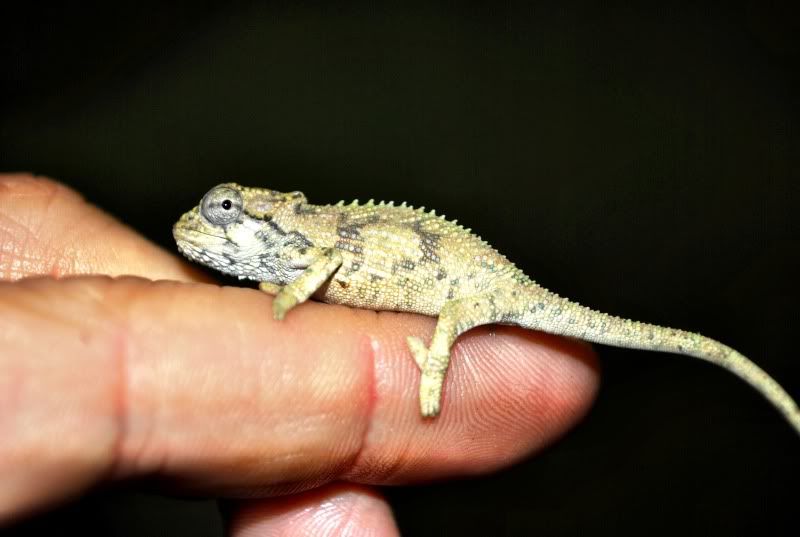
female transvaalense (mine)
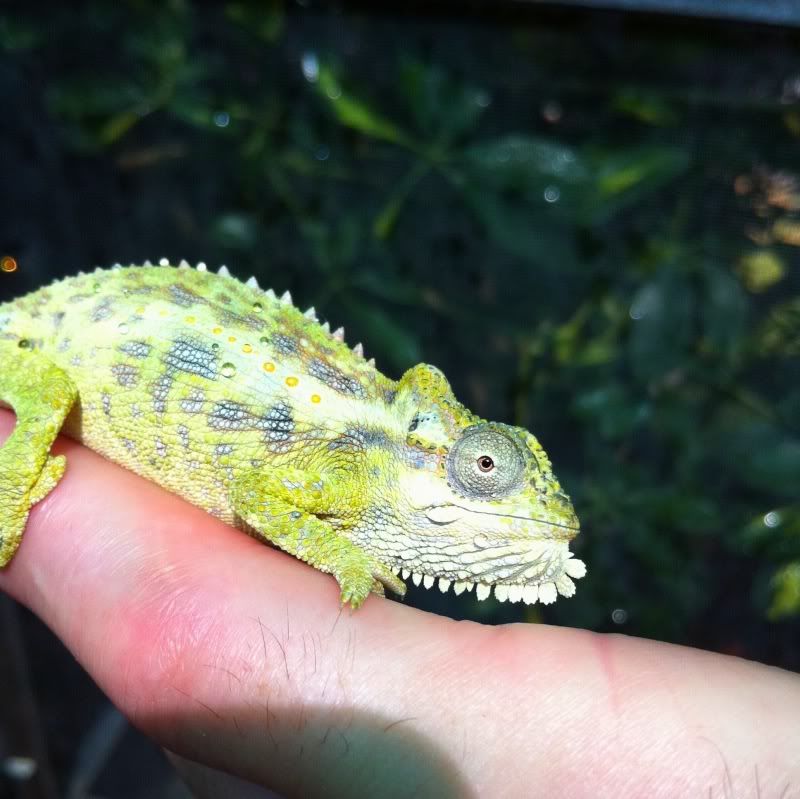
B. thamnobates
adult males not great pics (for some excellent photos of B. thamnobates please see Chris Andersons thread in the field observations forum on this site!)
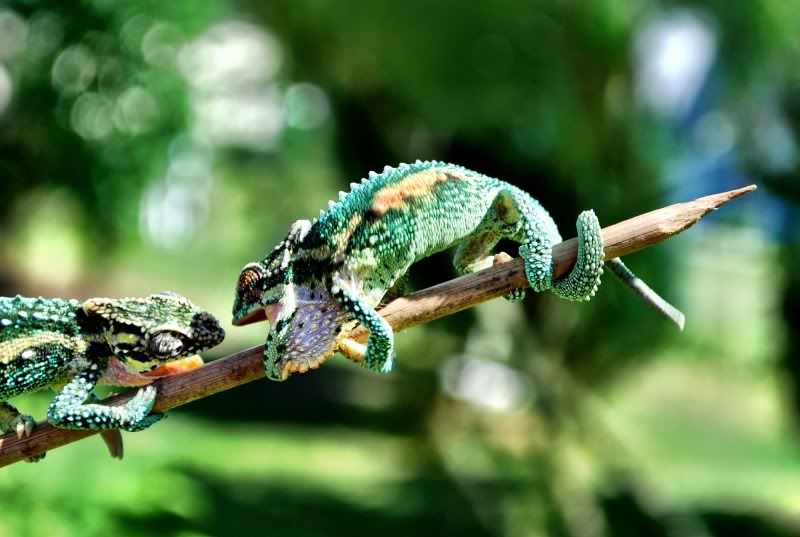
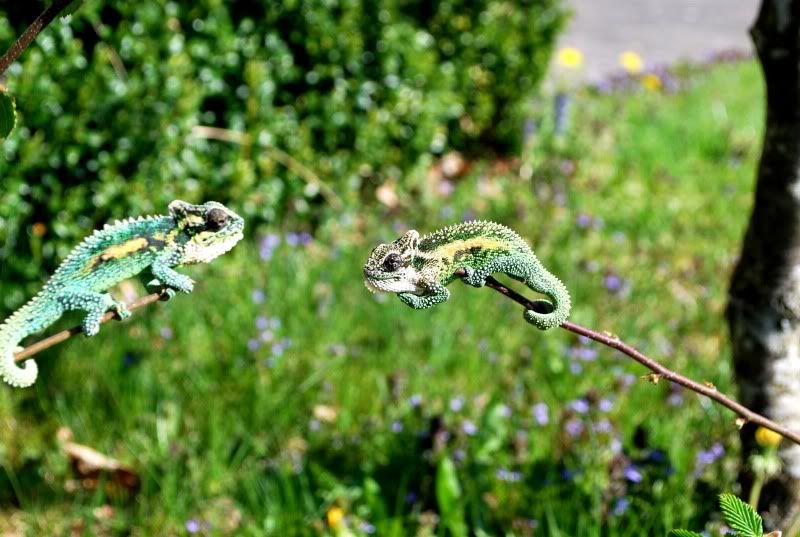
sub-adult male
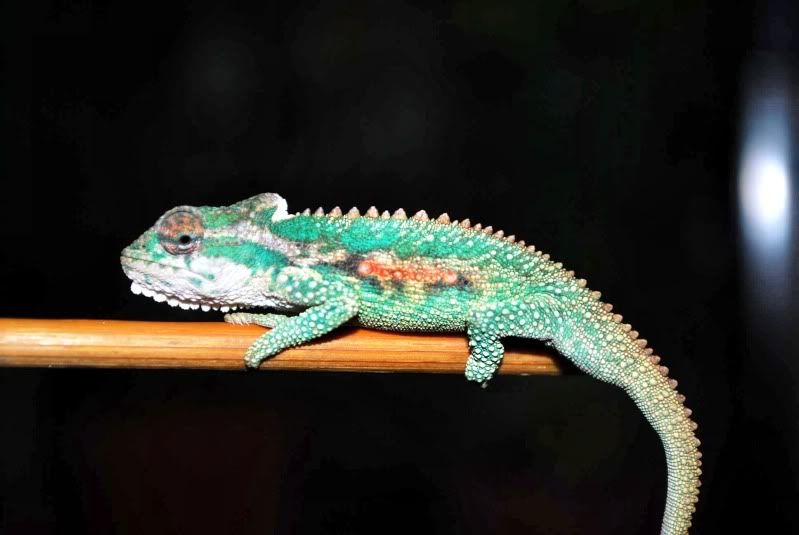
juvenile
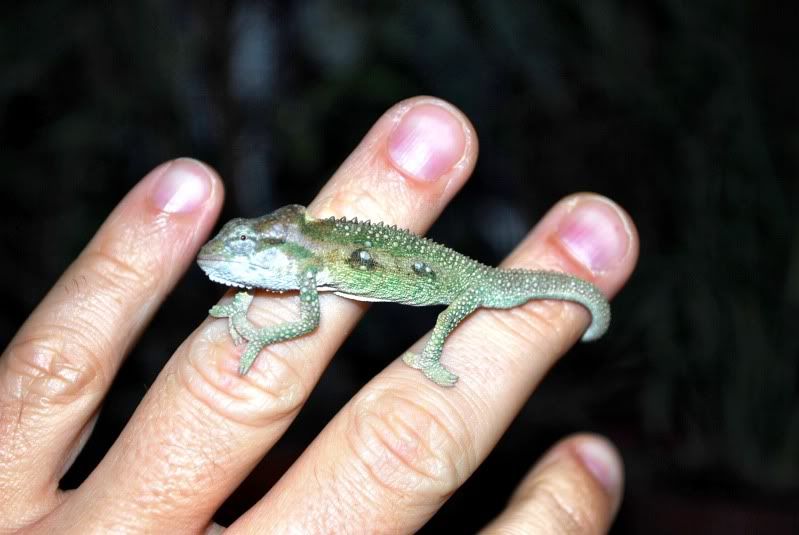
B. pumilum (my personal favorite)
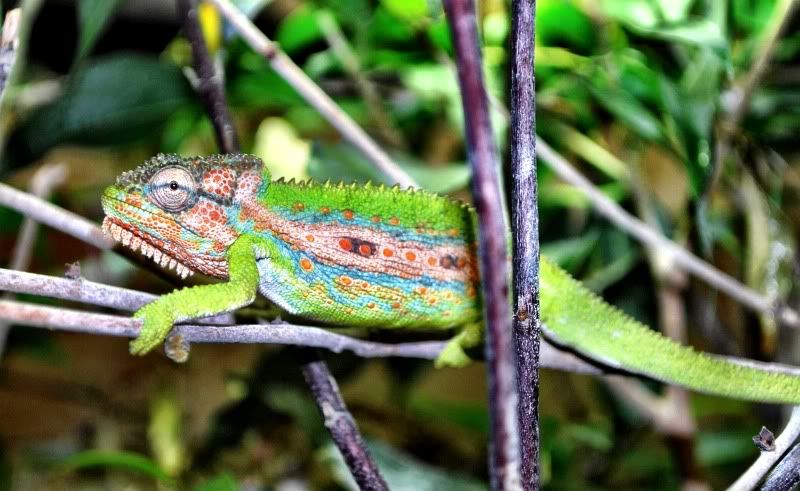
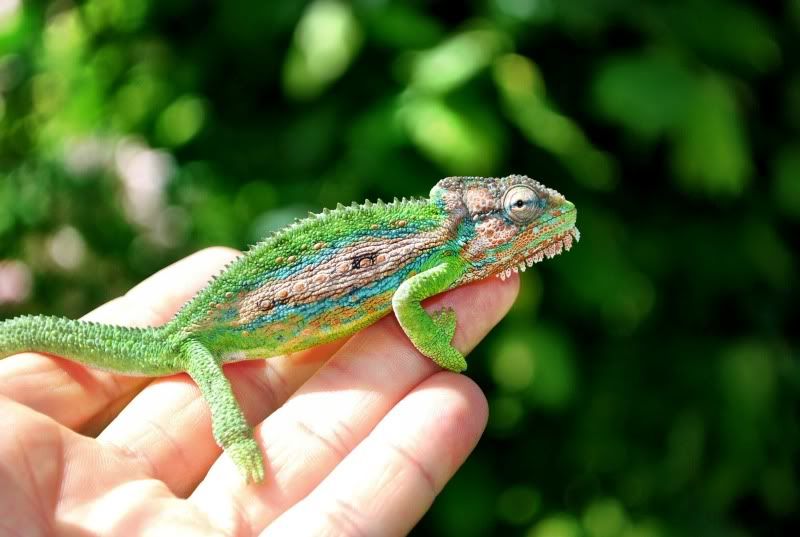
female
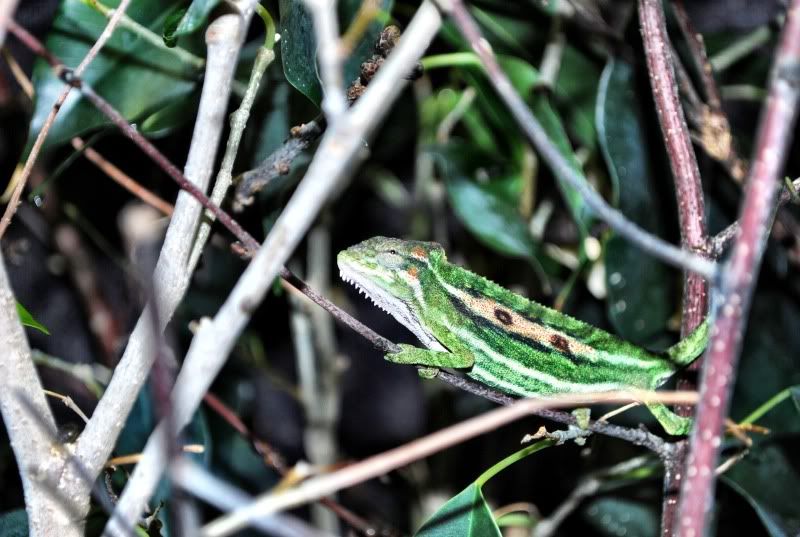
juveniles
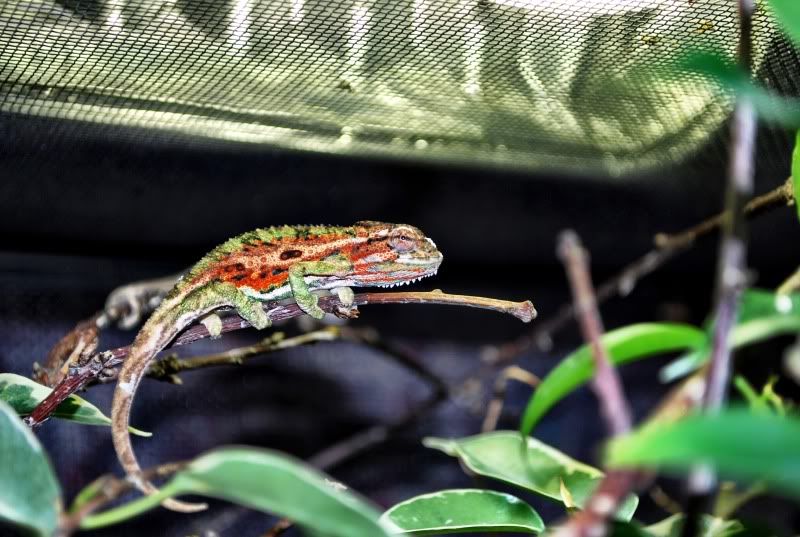
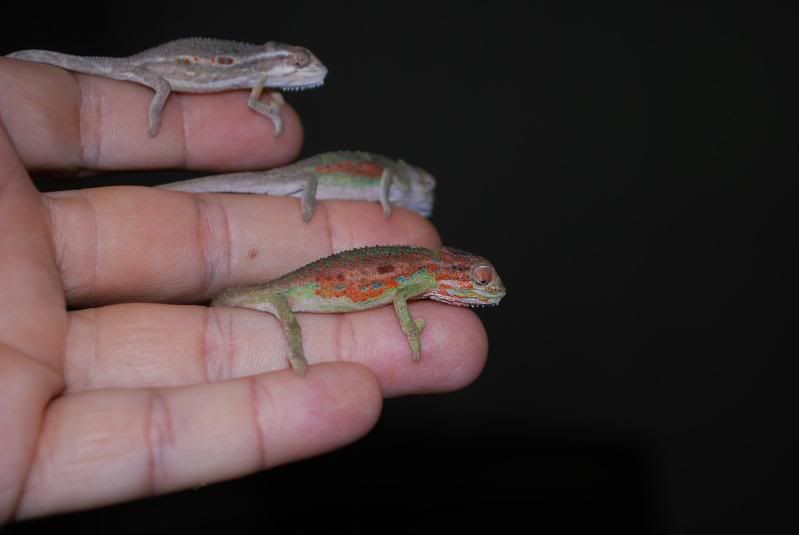
For those concerned about space, they can be housed individually in 18x18x18 cages at the smallest (IMO) I house mine individually in 18x18x24 exo terras and when paired up I house them in 24x18x24 exo terras. Their food requirements are low, as are the costs of keeping them fed. They can also take a very wide temperature range.
Ive also stated a couple times in other threads that when they get to breeding age, size, the males are relentless at attempting to mate with the females, and it is not a gentle affair. The head bobbing is amazing to watch, as they shake their heads extremely fast (more like a twitch) and they basically rape them but that is nature at work .
On a side note, my male has attempted to mate with a female hoehnelli when they were on the same palm lol, and does threat displays to any other cham he sees including my male ambilobe and veiled!
Dont miss out on this extremely rare chance to own and potentially breed these very rare and unique species from South Africa!
Last edited by a moderator:




